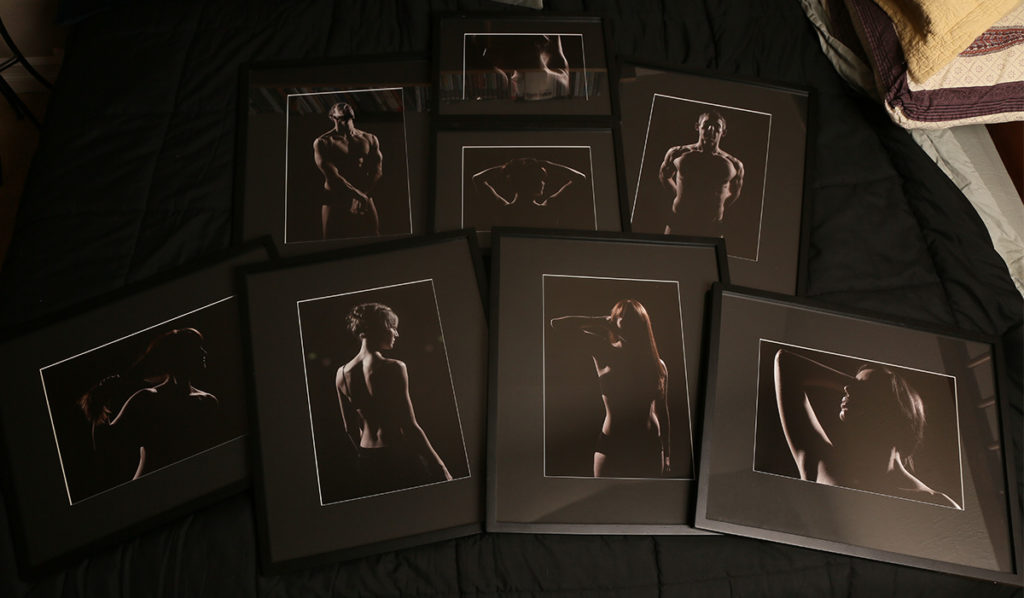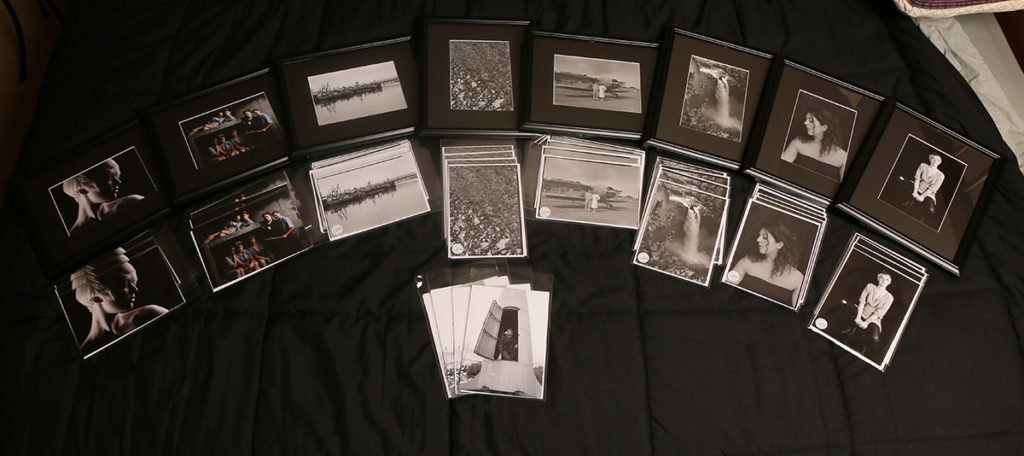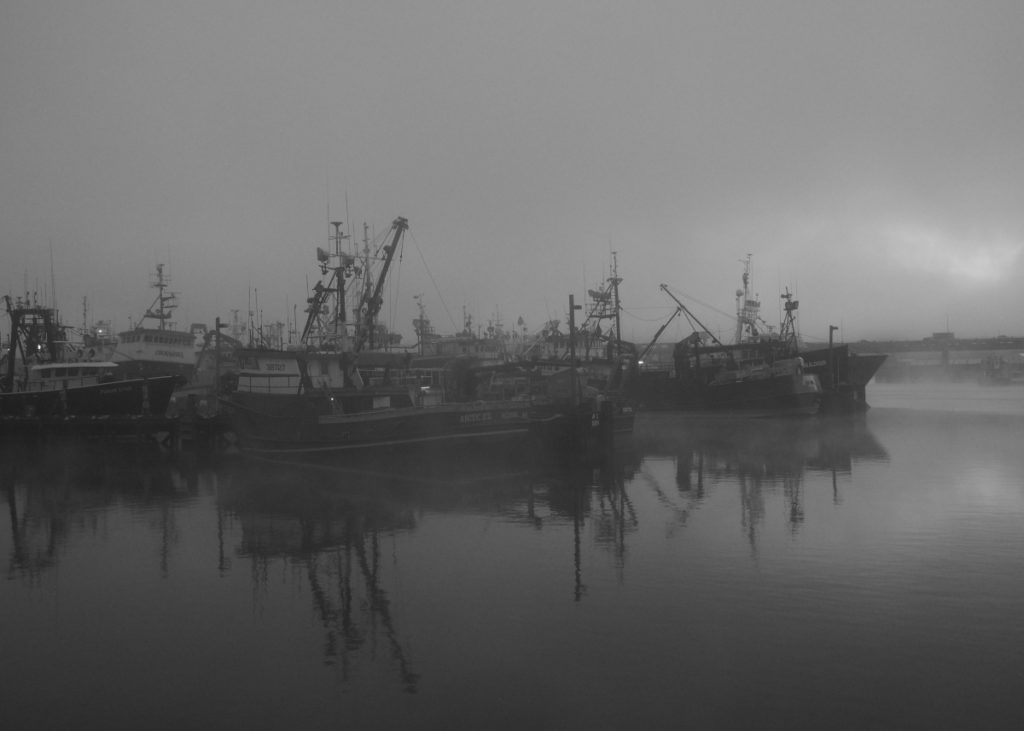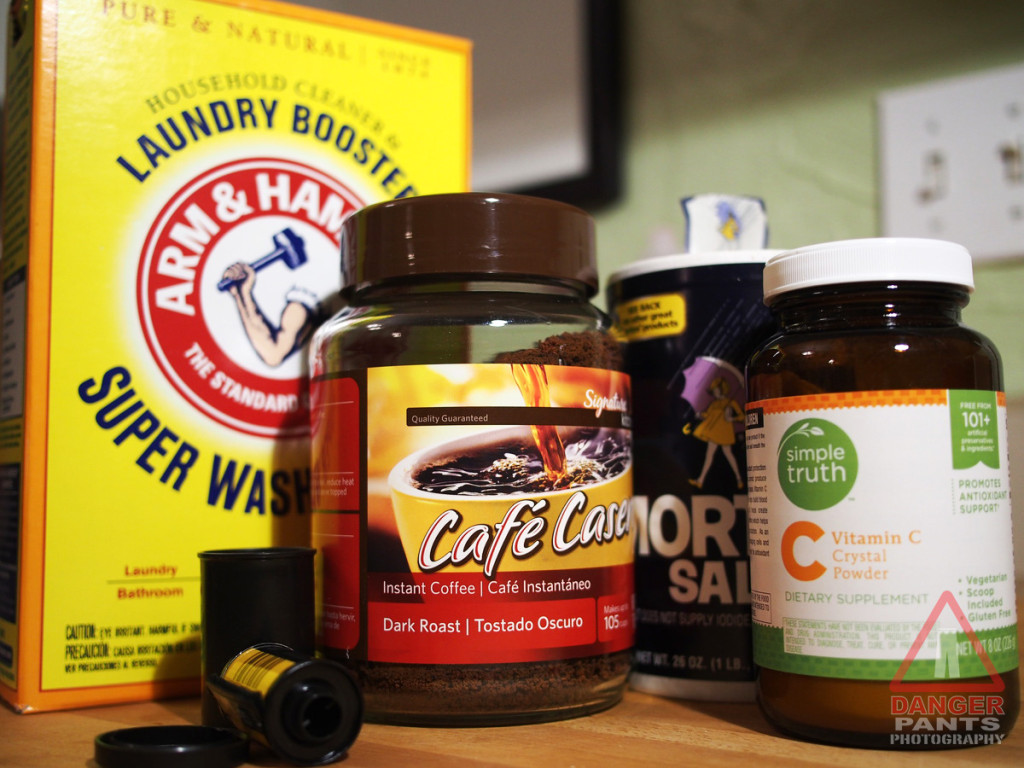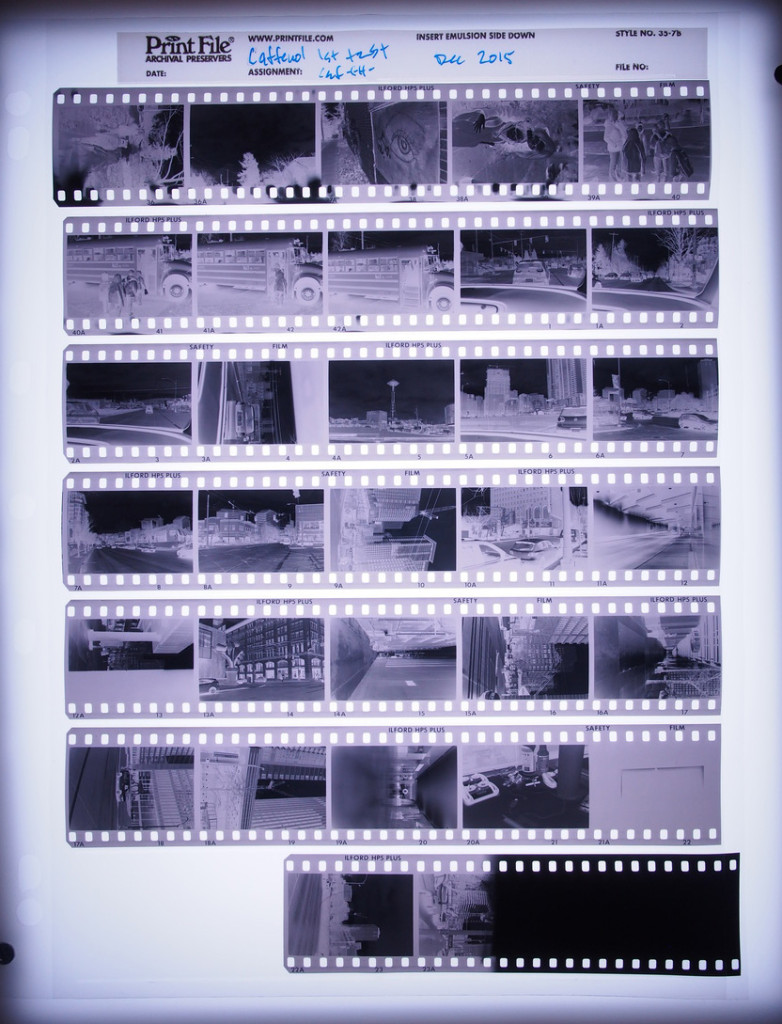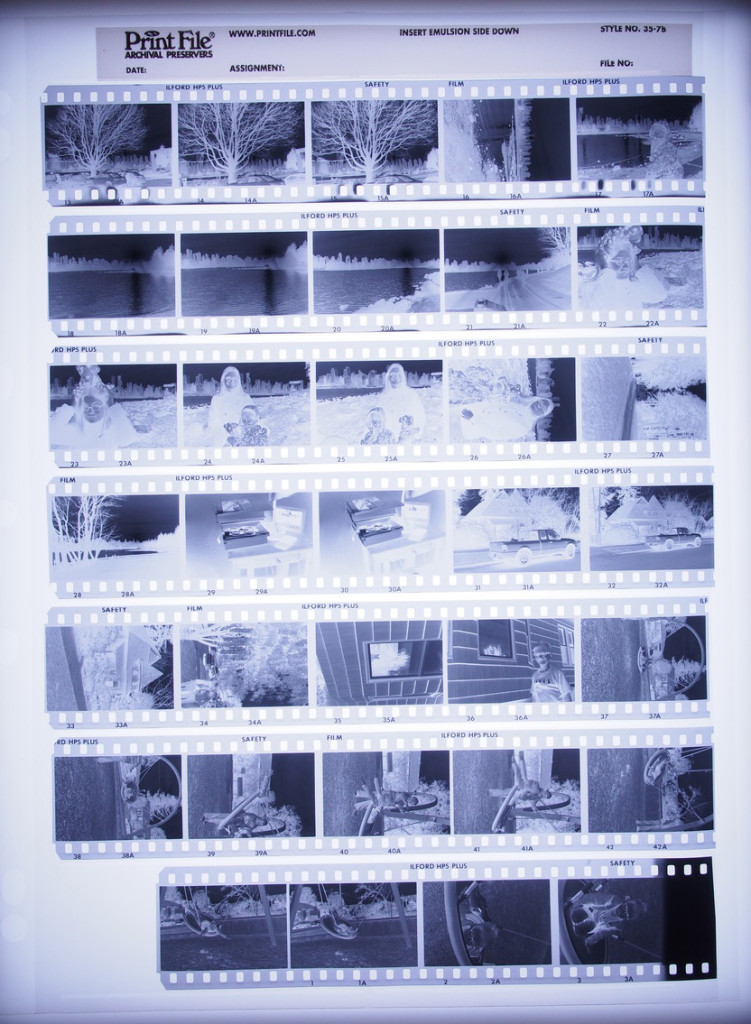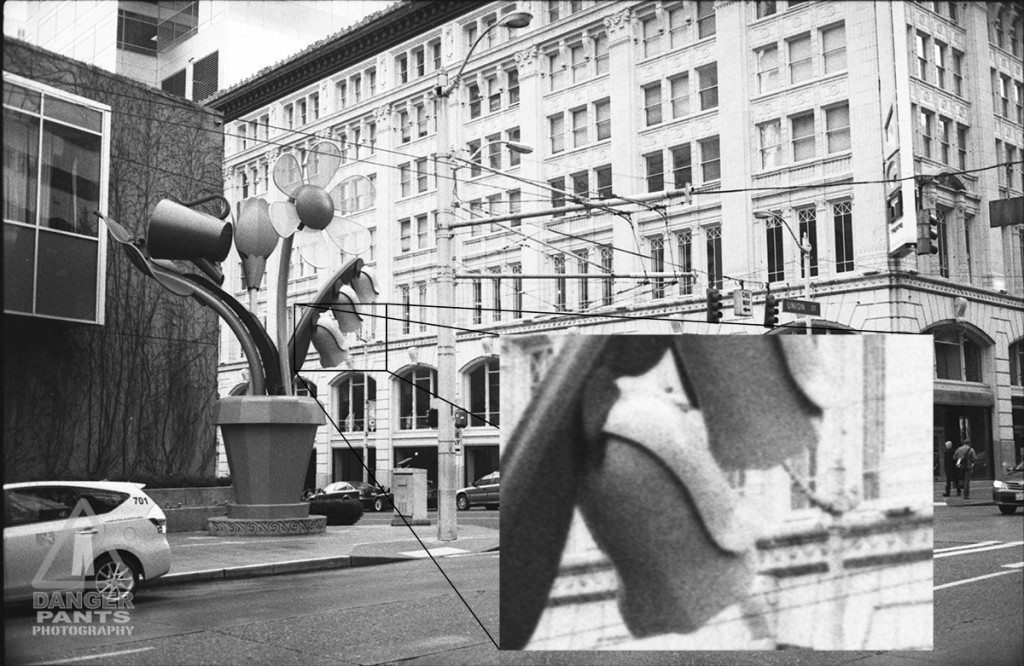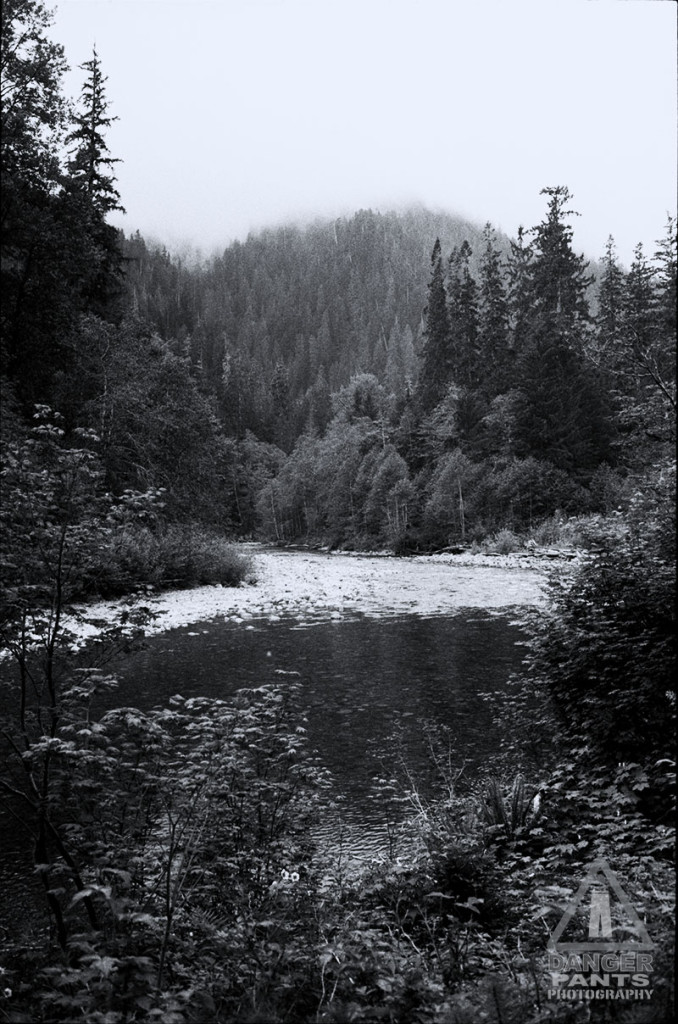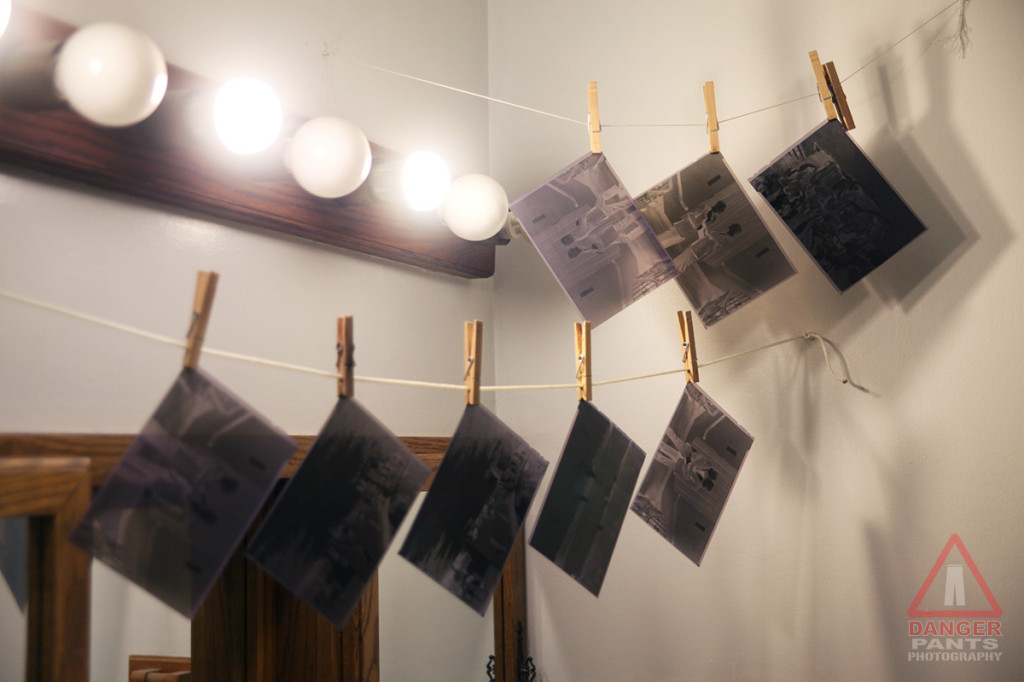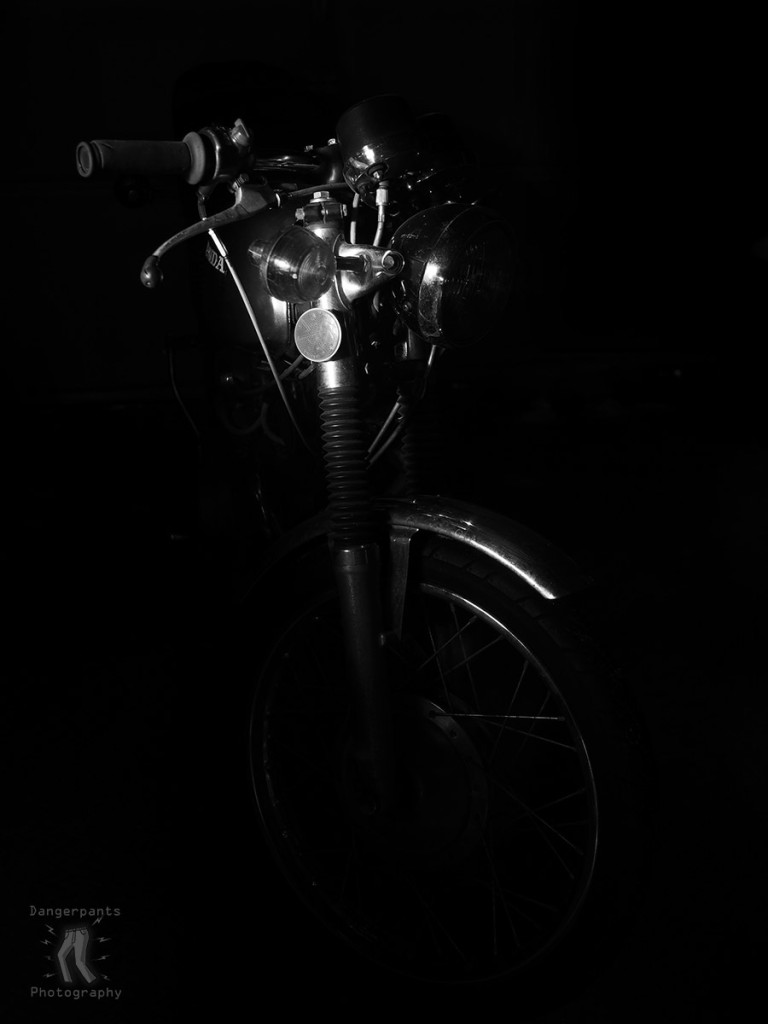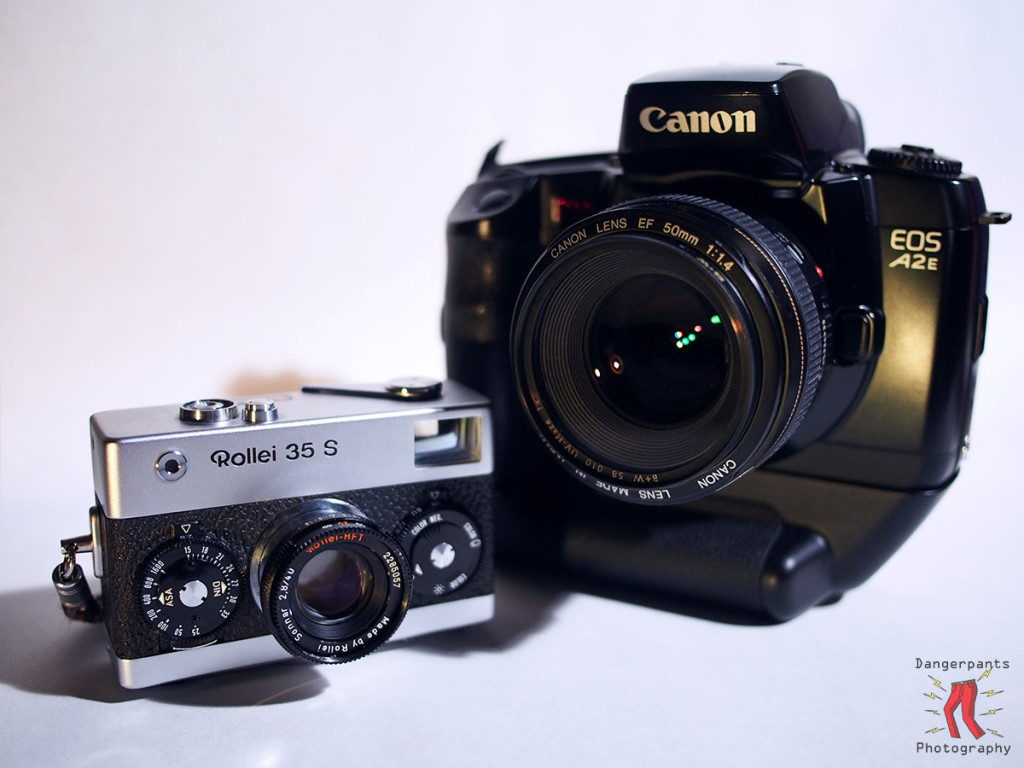I was out and about today, enjoying a cool, overcast Memorial Day weekend. I was up in the Mount Baker/Snoqualmie National Forest, on the Stillaguamish River, and came across this scene.
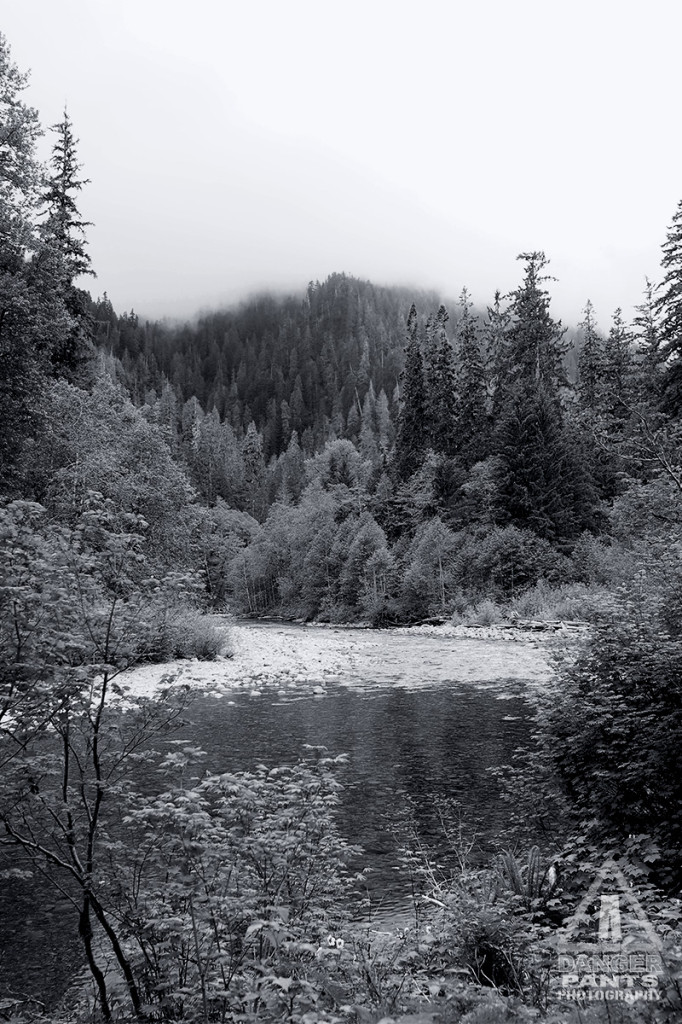
Moments like this are always tough. On the one hand, I want to take the best picture I can of the scene, since it’s so beautiful, and there are so many little tiny details to record: in other words, I want the 5×7 camera. But I really wasn’t on a photo expedition — I was on a motorcycle, enjoying the road through the park, so my photographic tools were limited. Instead of the 5×7, I had my “carryin’ around” camera, an Olympus OM-D EM-5 with a 20mm f/1.7 lens. But I also had my Canon QL17, which is a 35mm rangefinder from the early 70s with quite a nice 40mm f/1.7 lens on it. It was loaded with my standard Ilford HP-5+, which is a fairly good 400 speed film. It’s a great film at 5×7, but ends up being kind of grainy at 35mm. I shot the same scene on film anyway, just out of curiosity to see how the two compare (I already know, to some extent: the digital will be much clearer, and the film will be perversely pleasing, precisely because of the grain).
I find myself enjoying the film camera a lot these days, though digital is still my go-to for “real” work, primarily for the ability to shoot hundreds of images if necessary, and secondarily for the immediate turn-around on images. The problem, ultimately, with digital, is that in 50 years, I suspect most of those images will be unreadable. They’ll get lost in some hard drive accident, or everyone will have forgotten what a JPG is, or (more likely) how to decode a Canon RAW file. PSD files may or may not still be readable — Adobe might have dropped Photoshop as a product 20 years earlier when 3D became the only way to go, or they might have gone out of business when everyone got their brains updated with digital storage, and photo manipulation programs became obsolete in the same way buggy whips are obsolete now.
However, we’ll still have eyes. We’ll still have some way of recording a thing optically, into whatever format is current. Film, in other words, will still be readable and useful. I think about this, and frequently find myself very consciously taking pictures of people with film. It’s almost superstitious: that image, assuming I can take reasonably good care of the negative, will continue to exist long after I’m gone, just as my grandparents’ negatives and slides continue even though they’ve all passed away. In a way, the person pictured will live on in that moment. It has a kind of poetic beauty that I can’t similarly ascribe to digital photography.
I suppose this all makes me a film snob in some people’s eyes. I’m really not. Film is neat because it’s so simple and so real, unlike many things in life. Digital is still where I’m going to do 90% of my photography, but I doubt I’ll ever stop being interested in film, as long as I continue on this photography lark.

